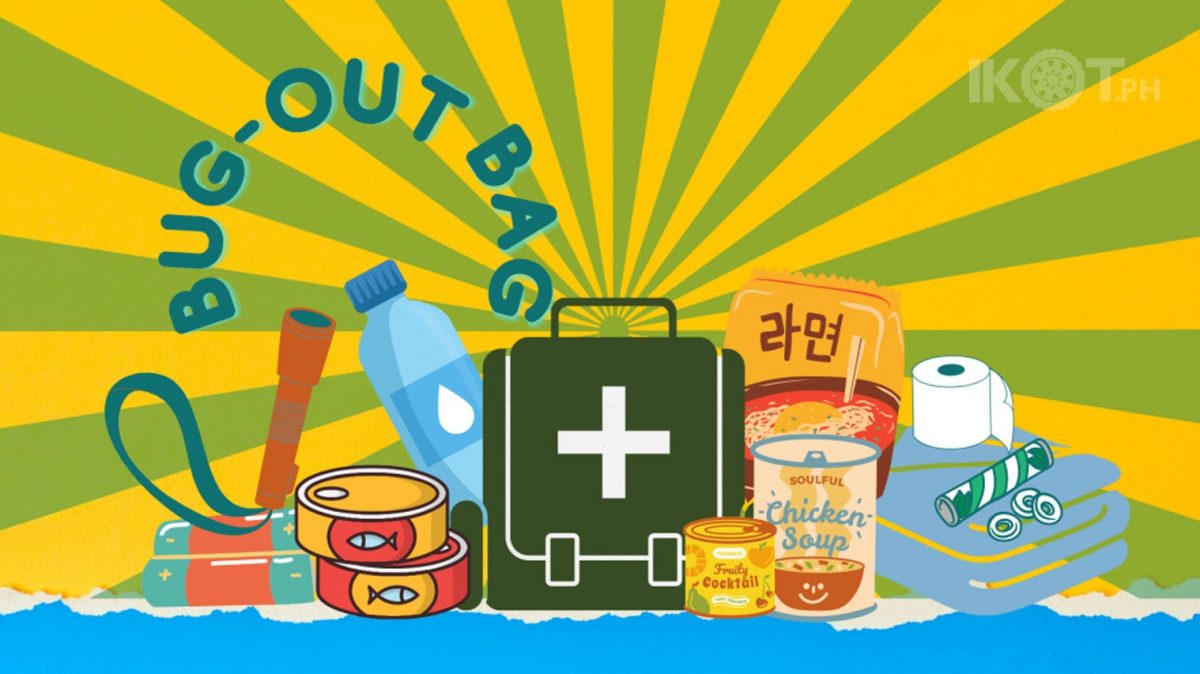Typhoons, volcanoes spewing ashes, earthquakes, and even zombie apocalypse. If these things happen, do you know what you have to do? Where will you go? What do you need to survive? Do you have your bug-out bag ready and supplied with everything you might need? Keeping certain things handy in times of emergency or calamity will not only help you, but you could save lives too!
For this week’s #TIL, we will share with you pieces of information that may come in handy if the most unfortunate of time comes. Of course, we’ll only say “if” and not “when.” Let’s keep an optimistic view of things while making sure we are prepared for anything. As they say, to err on the side of caution.
#TIL: BOB(Bug-out bag) is not only your friend, it’s your savior too.

GOOD(Get out of dodge) bag, 72-hour kit, PERK(Personal Emergency Relocation Kit), or QRB(Quick Run Bag). In the Philippines, since we encounter natural calamities that would sometimes require people to evacuate for their safety, these bags should always be within reach or safely stored somewhere when you need to scuttle.
In the past few years, we had seen countless times when people had to go to evacuation sites for shelter. When you go to a discharge point, donations of food and necessities are usually provided. Still, these may take time to get to you, depending on the severity of the situation and the logistics of delivering relief. So in every household, a bug-out bag must always be on hand.
These bug-out bags should include supplies that would last for at least three days. Canned fruits, soup, and vegetables usually last up to five years, so these are must-haves in your bag. Some candies, energy bars, and peanut butter don’t need refrigeration, so these, too, should be in your bag. Do not bring food that would require cooking as much as possible. Even though rice could last 30 years, there’s no use packing some if you can’t cook it, right? The point is, only bring non-perishable and easy-to-prepare nourishments.
Another item that you should include in your BOB is, of course, water. Redcross.org suggests that one should have a gallon per day, per person, that should be sufficient for a 3-day evacuation. Flashlights, first-aid kits, supply of your maintenance medicines, and traditional tablets should also be in your BOB.
Other things that should be in your bag.

Now that you have sustenance and medicines covered, sanitary and personal hygiene items should also be available. Alcohol, wet wipes, soap, hand sanitizers, insect repellants, and tissue should also be included. A blanket should also be available for emergency purposes.
One of the most important things you will need when you vacate your home is your chargers or power banks. It is essential to communicate with your loved ones and update friends and local government units. There should be at least one person who knows your whereabouts in times of emergency.
Personal documents will also come in handy, so make sure to keep them with you, along with some extra cash, placed in a water-resistant bag. The document bag, as much as possible, should also have your medical history. List down the medications you take, if you have any allergies, and if you are a donor or you have specific instructions in case there is a need to rush you to the hospital.
These bags are customizable, depending on what you think you need to carry with you when you need to run. The goal is to ensure that when you are not at the confines of your own home, or when home is no longer a safe place for you, these are the things you should have to survive a few days away or outside.
While we do not wish these things to happen, always remember that early preparation is key to survival. Taking risks in times of calamity is a dangerous feat. Stay alert and always know where to go and who to contact when the occasion calls for it.


